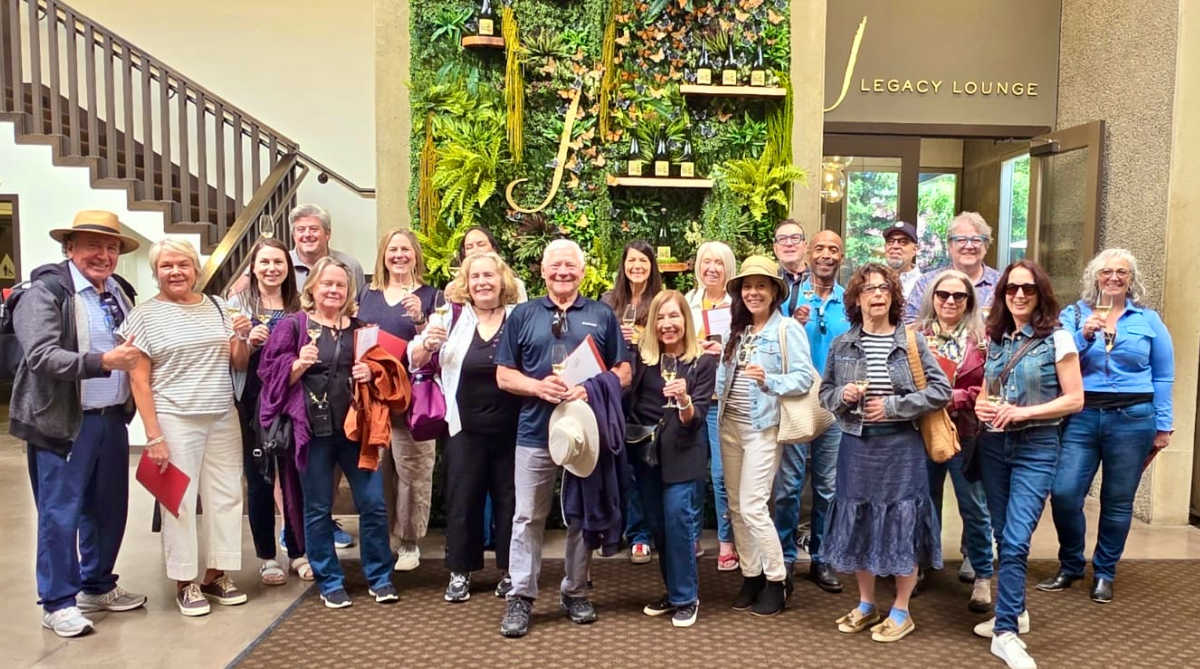Interview conducted by Carl Giavanti
Deborah Parker Wong, DipWSET, was appointed National Editor, USA, for the Slow Food Slow Wine Guide in 2020. As global wine editor for sister publications The SOMM Journal and The Tasting Panel magazines, she has been writing about the beverage alcohol industry for these and other outlets since 2004. Parker Wong teaches as an adjunct professor in the wine studies departments at Santa Rosa Junior College and Cabrillo College and owns a Wine & Spirit Education Trust (WSET) school, offering Level 2 and Level 3 certifications. In addition to writing and speaking about wine, she consults with producer groups and judges wine competitions.
Her motto is: To learn, read. To know, write. To master, teach. A partial archive of her published work can be found at her website. You can follow Deborah on social media at Twitter, Instagram, Facebook, and LinkedIn.
Note from Chris Cook, Capiche: Thanks to my friend and colleague Carl Giavanti for permitting me to reprint his interview with Deborah Parker Wong. I recently had the pleasure of spending the weekend of January 7 with them during the wine judging for the McMinnville Wine + Food Classic Competition.
Writing Process & Current Projects
What is your latest project readers should look out for?
A: During the pandemic, I’ve been obsessed with producing the 2021 edition of the Slow Wine Guide USA, which is now available in print.
 The Slow Wine movement evolved as an offshoot from Slow Food some 11 years ago and operates under the Slow Food ethos of “Good, Clean, Fair.” The USA guide is now in its fifth year and has grown to include four states: California, Oregon, Washington, and New York. While many of the wineries listed are certified organic and biodynamic, many are not, and we have a set of criteria that is used to qualify those producers with the defining criterion being absolutely zero use of synthetic herbicides. It is the only eco-friendly US wine guide, and, each year, our field coordinators visit the wineries to taste with the winemakers and update their guide entries. 2021 was a tipping point for the Slow Wine Guide USA as we published our first standalone print edition (which was by all accounts a pandemic miracle), and Slow Food USA promoted the guide to their nationwide membership, which has embraced us.
The Slow Wine movement evolved as an offshoot from Slow Food some 11 years ago and operates under the Slow Food ethos of “Good, Clean, Fair.” The USA guide is now in its fifth year and has grown to include four states: California, Oregon, Washington, and New York. While many of the wineries listed are certified organic and biodynamic, many are not, and we have a set of criteria that is used to qualify those producers with the defining criterion being absolutely zero use of synthetic herbicides. It is the only eco-friendly US wine guide, and, each year, our field coordinators visit the wineries to taste with the winemakers and update their guide entries. 2021 was a tipping point for the Slow Wine Guide USA as we published our first standalone print edition (which was by all accounts a pandemic miracle), and Slow Food USA promoted the guide to their nationwide membership, which has embraced us.
In addition to writing guide entries and editing, my role as national editor is to collaborate with and provide leadership for the talented team of coordinators who are out in the field making winery visits and to represent Slow Wine USA. Everyone who contributes to the guide or buys a guide and supports a winery is an advocate for the producers who are working with the health of our planet and ourselves in mind.
Other than my SOMM Journal sensory column and the Slow Wine Guide USA, I’m only writing on assignment until I’ve finished my master of science in viticulture and enology at California State University, Fresno.
What is your personal approach to wine writing?
A: At the expense of sounding like a tea-bag philosopher, my process can be summarized in a motto that I adopted early on, “To learn, read. To know, write. To master, teach.” I began writing about wine when I began studying wine in-depth, and writing has become an essential part of my ongoing journey toward mastery. Writing effectively plays an essential role in teaching and consulting work and now in my efforts to publish peer-reviewed research papers.
“To learn, read. To know, write. To master, teach.”
I’ve since adopted a second motto, “A goal is a dream with a deadline.”
In regards to wine reviews, describe your tasting process. And … what happens to all that extra wine?
A: I collaborate with Master Sommelier Catherine Fallis as a panelist for Planet Grape Wine Review. We have what’s called “the three-taste rule,” which means I taste a wine three or more times: upon opening, later that day with food, and over the next few days as the wines permit before weighing in with scores and notes. This is a time-consuming and thoughtful process. That said, I also judge wine competitions, which requires a very different approach. Because I’m teaching students year-round in academic wine classes and my WSET school, I frequently make up tasting kits with the extra wine. For example, I had three cases of wine from Piedmont to taste, and my WSET Level 3 students had 36 wines from the region to taste and explore.
Professional Background
How did you come to wine—and to wine writing?
 A: I chose wine as my second career, but I came to know wine through food. I was working as a farm-to-table cook before I was of legal drinking age, and part of the job involved managing a 5,000-bottle German wine cellar. It took months before I realized that I needed to taste the wine. So, German wines were my first fine wines. I began writing about wine in 2004 as a way to further my understanding of this vast subject when I began my WSET path to the diploma.
A: I chose wine as my second career, but I came to know wine through food. I was working as a farm-to-table cook before I was of legal drinking age, and part of the job involved managing a 5,000-bottle German wine cellar. It took months before I realized that I needed to taste the wine. So, German wines were my first fine wines. I began writing about wine in 2004 as a way to further my understanding of this vast subject when I began my WSET path to the diploma.
What are your primary story interests?
A: I’ve always been interested in writing about the underdogs—emerging regions, overlooked producers, mechanization, and, most recently, sensory science. I carved out a niche covering winery technology with a nine-year run at Vineyard & Winery Management until they stopped publication. I’m currently pursuing a master’s degree in viticulture and enology with a focus on sensory science.
Is it possible to make a living as a wine writer today? How have you succeeded, and what are the primary challenges and hurdles you face?
A: Full-time jobs writing about wine are few and far between, and they are usually reserved for the most talented writers, but even some of the best wine writers are moonlighting. I engage in a range professional activities in the wine industry—teaching, writing, speaking, consulting, and judging—which are highly interdependent; journalism informs teaching, which inspires speaking, which attracts consulting work and so forth. Writing is and has been a reliable if not lucrative revenue stream for almost 20 years now. The biggest challenge I face is blocking out the necessary time to write when I’m multitasking across all of these areas of practice.
Working Relationships
What are your recommendations to wineries when interacting with journalists?
A: In my opinion, most independent wineries are doing a fine job when it comes to being responsive and helpful when a journalist comes knocking. There is nothing I find more frustrating than corporate wineries that, for whatever reason, do not provide contact information for their marketing and communications folks or PR consultants on their websites. I will reach them regardless, but in not doing so, they cost me valuable time and energy.
What advantages are there in working directly with winery publicists?
A: There are advantages when you’re working with publicists who act as facilitators, not as gatekeepers. As a former public relations executive myself, I know “good” PR when I experience it. I try to be transparent about my process so they can work efficiently, and I make a point to acknowledge most inquiries and show appreciation for any assistance.
What frustrates you most about working on winery stories or wine reviews?
A: I wouldn’t call it frustration but pragmatism. There are times when I feel everything that can be written about a region like Burgundy or a grape variety like Pinot Noir has already been written. From the beginning, that pragmatic attitude pushed me to write about lesser-known regions, emerging technologies, sensory science, the environment, and the underdogs as a way of differentiating my voice and not rehashing content that’s been covered ad nauseam.
Personal Information
If you take days off, how do you spend them?
A: Like for most self-employed professionals, there’s rarely a day that goes by when some work is not being done. That said, when I have free time, I’m usually walking the dog—at the beach if the weather permits, occupied with some home improvement project, or cooking something that takes longer than 30 minutes to prepare.
What is your most memorable wine or wine tasting experience?
A: There are wines that I drink for sentimental reasons, but my favorite wine moments are all built around unforgettable experiences—drinking Sauvignon blanc and dancing under the stars along the Awatere River in Marlborough, New Zealand; savoring Chenin Blanc during al fresco meals in the Loire Valley; being warmed by Malbec after freezing on the pampas in Patagonia, Argentina. I have the generosity of the producers to thank for those indelible experiences.
What is your favorite wine and food pairing?
A: Wine and food are inseparable, but cooking is both an everyday chore and an exercise in creativity. I shop daily when I can, and I don’t own a freezer. I prepare lots of Cantonese dishes, but I never let my French classics get rusty. I love a fish soup (call it a riff on bouillabaisse), soufflés, gougères, vegetable terrines, the occasional madeleine for tea, and any wine that pairs well with them. I do believe that, with some exceptions, most wines go with most foods, and I like to test for the exceptions all the time. If whatever is open doesn’t work, I’ll just move on and return to it the next day. Tasting is happening, but when it comes to wine as food, I prefer to drink what I enjoy.
Turning the Tables
“Turning the Tables – Interviewing the Interviewers” is a Q&A series profiling wine writers. We hope you’ll discover more about the wine writers you know and learn about many others. The objective of this project is to understand and develop working relationships with journalists. They are, after all, those who help tell our stories, review our wines, and potentially provide media coverage. You can do this by learning their wine and writing backgrounds, story, personal interests, palate preferences, writing challenges, and pet peeves. This is part of an ongoing series that is featured monthly by Wine Industry Advisor.
Carl Giavanti is a winery publicist with a DTC marketing background. He’s enjoyed 11 years of winery consulting. Carl has been involved in business marketing and public relations for more than 25 years—originally in technology, digital marketing, and project management and now as a winery media relations and communications consultant. Clients are or have been in Napa Valley, Willamette Valley, and the Columbia Gorge.



Leave a Reply